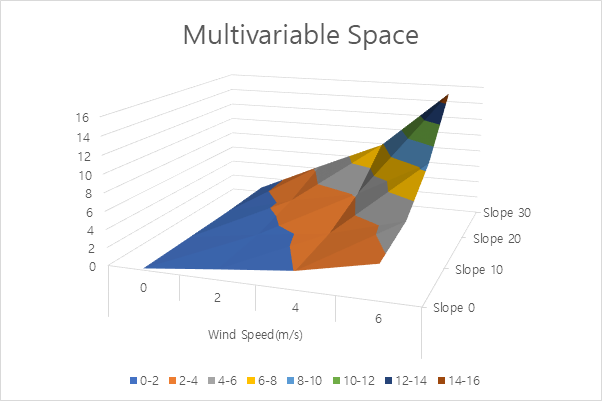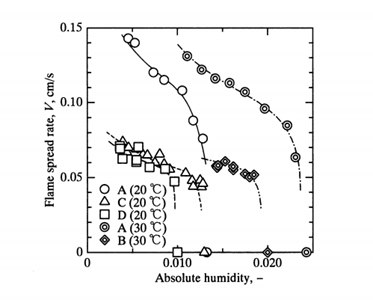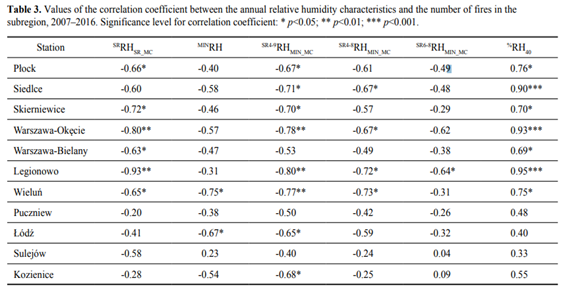
Calculating a Reliable “Golden Time” for Fire Detection
Last Updated on February 17, 2021 by Editorial Team
Author(s): Jungwook Hoh
Data Science
Converting spatial information into a time-based one regarding wildfire. With linear regression, it adds credibility.
During my time working at Alchera Inc., I was assigned to work within the visual anomaly detection technology product division where we are currently working on camera-based smoke and fire detection. A typical area of conversation in the wildfire mitigation space is of a “golden time” or the amount of time between a fire ignition event and when it needs to be detected to prevent it from becoming a disaster. While there are many factors at play, the following article is my attempt to properly classify the golden time for fire detection so as to provide a clear benchmark for our fire detection system based upon the deployment location.
Before I start, I would like to make it clear what the disaster is for wildfire. Without defining the term ‘disaster’, the concept of golden time would also be overly subjective. I would define ‘wildfire disaster’ as a fire going beyond the capability of firefighters to catch it before it gets ‘out of control’. Then, let me make it clear what ‘out of control’ means. I suggest, considering the entity who controls the fire, if the fire spread range/rate, economic damage, time spent in extinguishment etc. become unpredictable and noncomputable, the fire is in the state of ‘out of control’. Now I am ready to move on to problem/solution analysis.
Problem: There is no established ‘time-based’ information about when the latest time possible is for preventing wildfire from getting out of control.
Solution: Using an established defensible space area, fire spread rate, wind conditions, and humidity data, we can create a proxy formula to calculate the golden time for a given location.
A defensible space is “a natural and/or landscaped area around a structure that has been maintained and designed to reduce fire danger. The term is, in the context of wildfires, used especially in the wildland-urban interface (WUI).” This space reduces the risk of fire spreading from one area to another, or to a structure, and provides firefighters access and a safer area from which to defend a threatened area. This means, even if there comes a fire in random area among forests, as long as it’s inside the defensible space, firefighters can stop it from spreading further.
According to an article from CalFire webpage, there are two types of zone for defensible space. Zone 1 extends 30 feet from building (in case of wildfire, it would be the fire ignition point). Zone 2 extends 100 feet out from the building or ignition point. Now we have a spatial number for wildfire.
Then, there was an experiment conducted by the National Institute of Forest Science (NIFOS) in South Korea. They tested the speed at which fire spreads depending on the speed of wind and slope of land. The following is the result of the NIFOS experiment.

The steeper the land is, the faster the fire spreads. Also, high winds cause fire to spread faster. While more raw data is needed for better accuracy, in order to make some general proxy formula, I’ve conducted a multivariate linear regression.

As a result of the linear regression, the coefficient for X1(wind speed) was 1.245625, for X2(slope of land) was 0.170425, and Y intercept was -2.58388;

To calculate the golden time for defensible space, we divide spatial range by spreading speed.

- 100 feet = 30.48m
- 30.48m / Spread speed (by meter/minute) = Golden time (minute)
Thus, the result for our golden time calculation was as follows:



The insight from the analysis is that the golden time for wildfire would differ by location, and as long as we know the slope of the location and monitor the wind speed of the area, it would be possible to create a real-time golden time for any given location. For example, California in the US, one of the largest wildfire hazard areas globally, has the most frequent wildfires from Spring to Fall. During this period, the average wind speed for Los Angeles, California is about 3.2m/sec. Supposing a location in California has a 10°slope, a basic linear model(LM) gives 9.8 minute golden time, and an adjusted LM gives 7.7 minute golden time.
While this is a reasonable, if not rough, estimation there is still one variable left that was not covered so far: humidity. It is rational to think humidity would considerably affect the spread of fire. Ideally the above analysis should also include humidity in the above-stated linear regression. Unfortunately there’s not enough raw data for it. Still, it is worth taking a look at whether humidity is negatively correlated with fire spreading.
Two notable papers deal with this issue. According to Effects of Humidity and Temperature on Downward Flame Spread over Filter Paper(2000) by Suzuki, Kushida, and Dobashi, both absolute humidity and relative humidity are negatively correlated with flame spread rate. It says flame spread rate decreases as humidity increases and becomes zero when the absolute humidity is higher than critical value. A graph is presented below.

Also, The Influence of Relative Humidity on Fires on Forests of Central Poland studied the relationship between humidity and number of wildfire ignitions conditional on environmental factors regarding humidity. Table 3 shows that there is negative correlation between fire eruptions and relative humidity generally.

To provide the most accurate calculation possible, this single article would not be enough; one would need to make another experiment which takes into account all four variables (three independent and one dependent) with greater raw data. However, it is still noteworthy that the approach which this article suggests is viable and applicable to an actual calculation.
Regardless, I believe we have proposed the most reliable method to calculating a golden time for wildfire detection. Using this, we aim to introduce this calculation into our fire detection efforts for added situational awareness for our clients. Alchera Inc. is currently deploying machine vision-based fire detection on cameras across California, having caught hundreds of early-stage wildfire ignitions in 2020, and continuing to do so in 2021.
About Alchera: Alchera Inc. is a team of AI experts who solve problems where there is a need for AI but limited by resources. With world-class speed and accuracy, Alchera deploys systems and hardware agnostic AI technology to society-impacting industries.
[Reference]
[1] https://en.wikipedia.org/wiki/Defensible_space_(fire_control)
[2] https://www.readyforwildfire.org/prepare-for-wildfire/get-ready/defensible-space/
[3] 2016.03.23., 보도자료, Korea National Institute of Forest Science
[4] Suzuki, Kushida, Dobashi (2000), Effects of Humidity and Temperature on Downward Flame Spread over Filter Paper, Tokyo 113–8656, Japan
[5] Konca-Kędzierska, Pianko-Kluczyńska (2018), The Influence of Relative Humidity on Fires in Forests of Central Poland, Podleśna 61, 01–673, Poland
Calculating a Reliable “Golden Time” for Fire Detection was originally published in Towards AI on Medium, where people are continuing the conversation by highlighting and responding to this story.
Published via Towards AI
Take our 90+ lesson From Beginner to Advanced LLM Developer Certification: From choosing a project to deploying a working product this is the most comprehensive and practical LLM course out there!
Towards AI has published Building LLMs for Production—our 470+ page guide to mastering LLMs with practical projects and expert insights!

Discover Your Dream AI Career at Towards AI Jobs
Towards AI has built a jobs board tailored specifically to Machine Learning and Data Science Jobs and Skills. Our software searches for live AI jobs each hour, labels and categorises them and makes them easily searchable. Explore over 40,000 live jobs today with Towards AI Jobs!
Note: Content contains the views of the contributing authors and not Towards AI.















